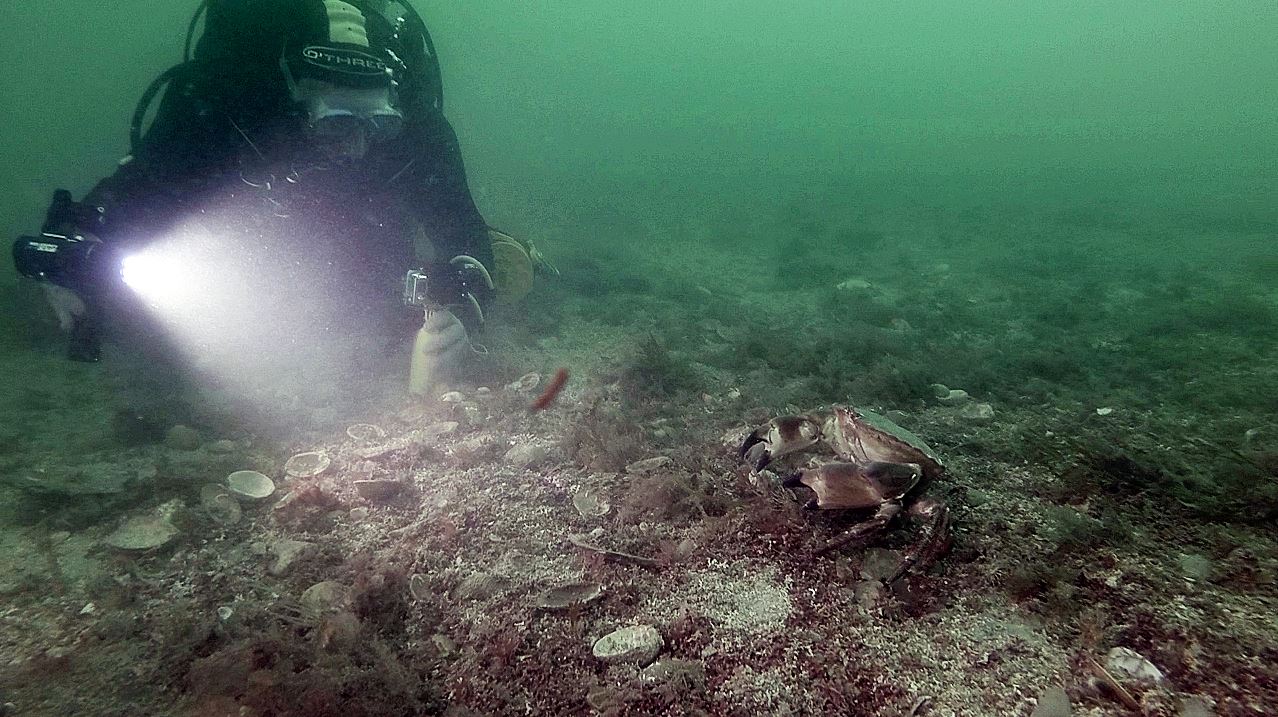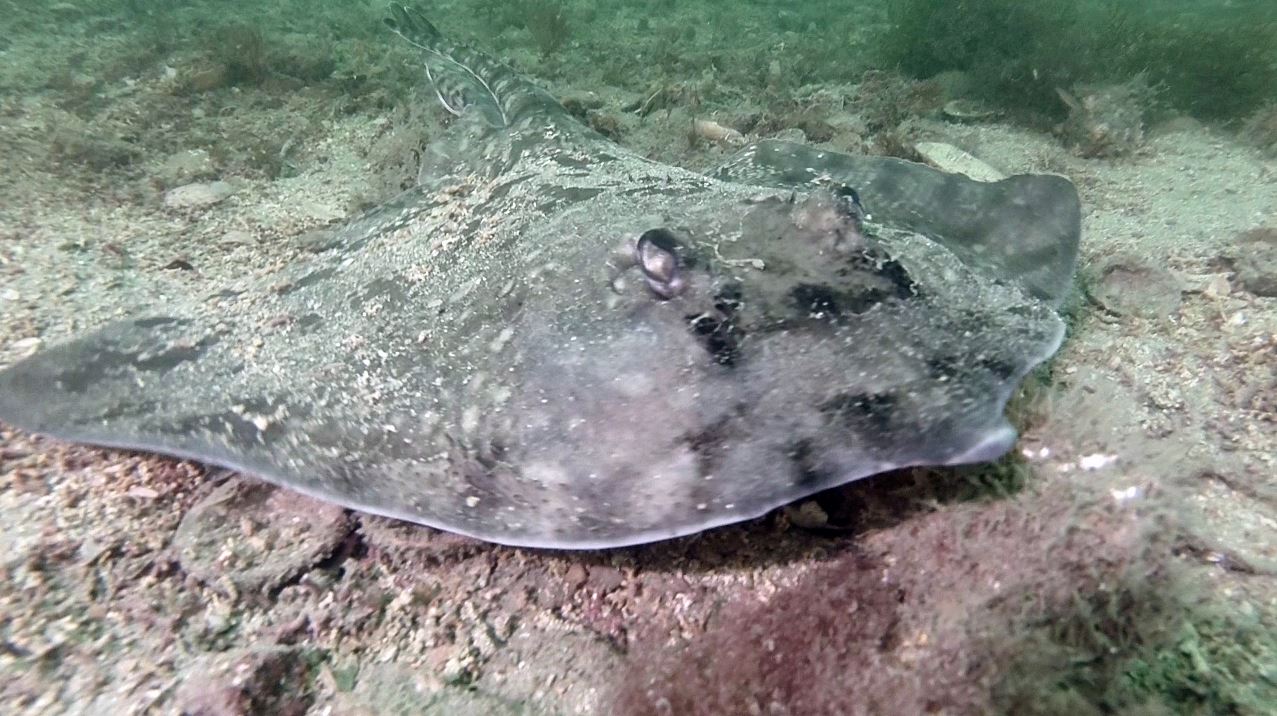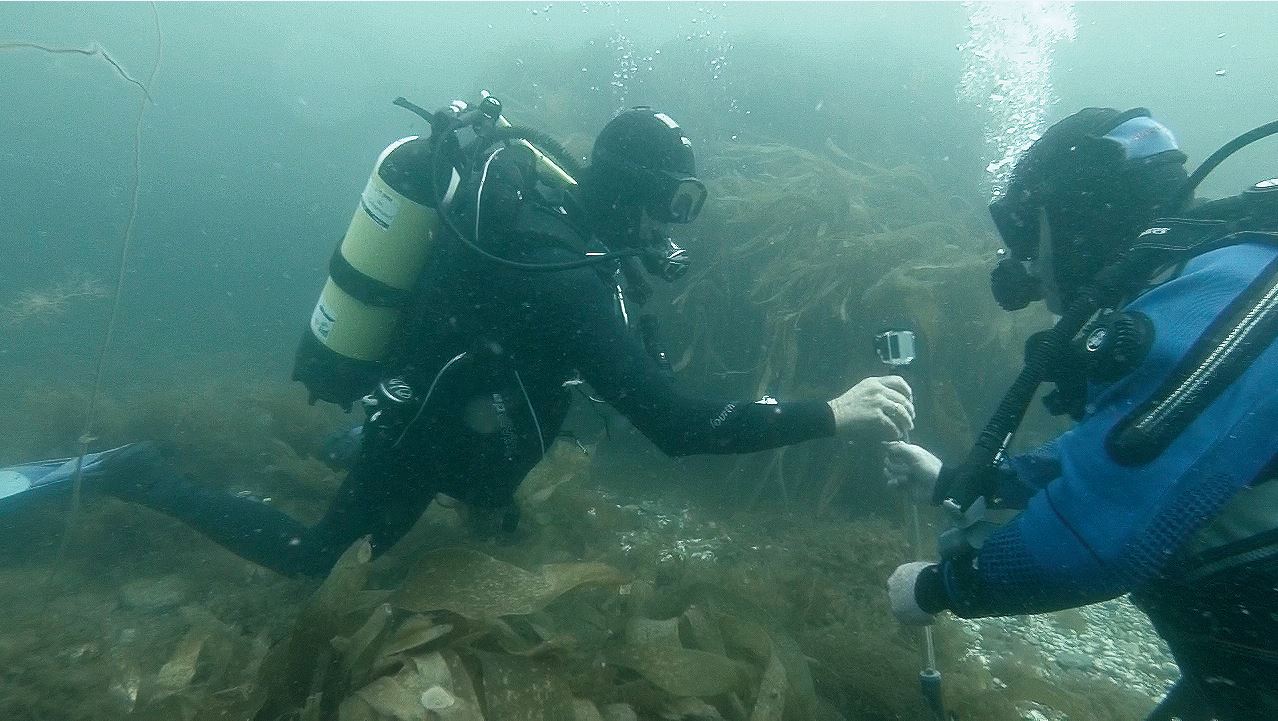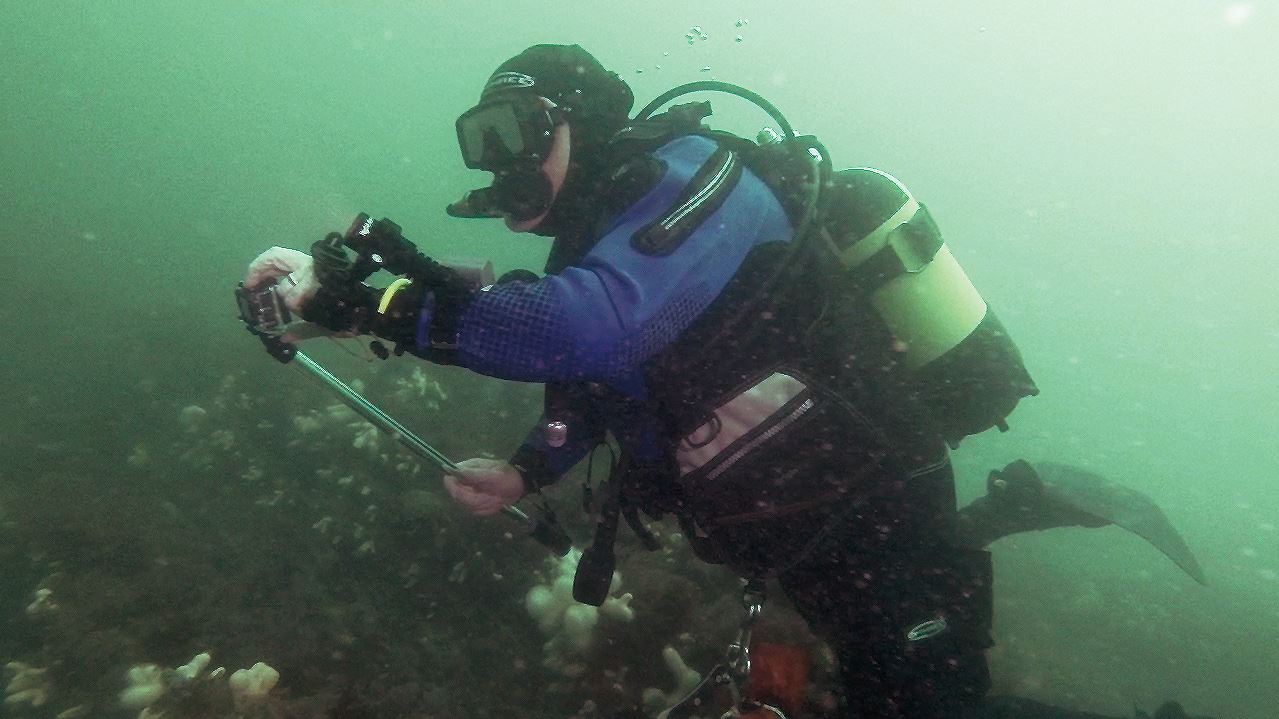News
Make the most of your GoPro

Jeff Goodman is not someone to shout about his achievements from the rooftops, in fact I can’t imagine him shouting at all. But beneath the serene, almost unnaturally calm exterior, there lies a spirit of adventure that has seen him spend over 30 years travelling and filming on every continent, much of the time beneath the water. He has won many awards, been twice nominated for a BAFTA, and worked with everybody worth knowing in the business. He never name drops though, with one notable exception. He becomes uncharacteristically excited when recalling his filming exploits with his childhood hero, John Craven!
I first met Jeff a couple of years ago on a local dive trip, a time which coincided with the meteoric rise of the GoPro camera. Originally developed to film its inventor’s surfing exploits, this amazing piece of kit has now been used to capture thousands of hours of adventure footage and all in a package no larger than a match box. So when I discovered that Jeff was running GoPro filming and editing courses here in Cornwall, it would have been rude not to sign up.

A hot Saturday morning found us meeting at the Atlantic Scuba dive centre near Falmouth, where Jeff bases his UK courses. We were joined by fellow participant Nic Weeks of Holborn BSAC. This was the introductory weekend course but, as we soon discovered, it’s far more than a taster session. We were soon chatting about long, mid and close up shots, and how to alter the settings on the camera to achieve optimum results. That was the first epiphany: small it may be, but the GoPro is far more than a point and shoot camera. With the ever-tactful Jeff gently pointing out that knowing how your camera works is rather important, we eagerly gathered our kit together, and headed to Mylor to board the dive centre’s spacious RIB, Stingray, for the first dive.
Dive 1: The Outer Bizzies Reef.
This dive was originally to be in the East Narrows, closer to Falmouth, but a yacht race directly over the site forced a rethink. So we rounded St Anthony’s Head and were soon over the reef. We dropped into about 20 metres onto a series of rock pinnacles and sandy gullies, well stocked with invertebrate and fish life. We had no concrete plan other than to do some filming of whatever we could find. And with that came the first increase in the gradient of the learning curve. Video is dynamic, so simply filming a stationary urchin is unlikely to secure you a contract with the Discovery Channel or the BBC. Nic and I were also surprised to discover that when our footage was reviewed, neither of us had a single shot that lasted more than three seconds. Patience, it seems, was a virtue that we would both need to work on.
Dive 2: The Andromeda.
This four masted barque has long been a favourite wreck of mine. It’s shallow, colourful, easy to get to and a joy to film. We were briefed to include some of the structure of the wreck to frame divers or fish. The visibility was uncharacteristically poor for this site at around five metres, and the kelp had certainly reached its full Summer growth, but there was still ample scope for filming. We experimented with lighting and perspective and whilst I can’t honestly claim to have been ready to jump on the next flight to Hollywood at that point, I did at least manage to take one or two of the shots that I intended, rather than relying on good luck or panic to attempt a sequence. We could now identify a subject which might be worth filming. Next we needed to know how to film it.
This was another site which I know well, having spent many dives trying to locate an elusive wreck in the area. Our task was more specific, namely to film a sequence featuring long, mid and close up shots of a diver, as well as a POV (point of view) shot to illustrate what they were looking at. It sounds straightforward, but this was the point at which Jeff wanted us to move up a notch in terms of the quality of our work. Unfortunately this was also the point when I realised why blind photographers are something of a rarity, as I mistook the stills icon (a tiny red blob according to my eyesight) with the video icon (another tiny red blob) with the result that I presented Jeff with 300 still shots of his legs. As always, he was the very epitome of diplomacy, but I could tell that my avant garde approach to film making was unlikely to earn me as many BAFTA nominations as Jeff had received. Another lesson was learnt too, as a seal and a barrel jellyfish popped up next to the boat just as we had de-kitted. Wildlife will never miss the opportunity to taunt you without mercy if it knows you have no camera. As you will see, that particular lesson was to be reinforced on the next dive.
Dive 4: the East Narrows.
With much lighter boat traffic than the previous day, we headed back to this site, which is a sloping bank on the eastern side of the shipping channel into Falmouth. The pressure was really on here. As the person supposedly with local knowledge (never admit to this) I was chosen to pick a specific subject to film. This site is normally a good spot to see various species of Ray so that was my suggestion. Jeff took us through the sequence of shots which would work best with this animal. The seabed is unusual in that it is composed of fragments of maerl, or calcified sea weed. We drifted North in the light flood tide until Jeff spotted a beautiful Thornback Ray, and we gingerly gathered round to film it. I switched my camera on and… nothing happened. I tried again, still nothing. It had gone into sulk mode. One of my regular buddies, Paul Freeman, who had been watching us film, felt my pain, as he had lost his stills camera on the previous dive! So with Jeff and Nic having the only working cameras, Paul and I headed further North to cut our losses by practicing our skills at locating wildlife. Need I tell you what happened next? The wildlife, sensing our inability to immortalise it on film, began to show up in droves. We counted twenty Rays, both Thornback and Blonde, and a stationary John Dory which didn’t move an inch, no matter how closely we approached. Two other divers on the boat told us that they had witnessed the amazingly rare spectacle of a huge Bull Huss giving birth in a small cave! Of course they didn’t have a camera either.
When we returned to the dive centre, the mystery of my malfunctioning camera was humiliatingly solved by Jeff, who discovered that during the surface interval I had changed batteries and put the new one in upside down. I was utterly mortified. Having sorted out that little problem, we looked more at editing techniques, and software choices available, as well as discussing continuity issues and how to overcome them (the fish will do it for you if you ask nicely). We concluded with some valuable information about the use of music and narration in our soundtrack.
All too soon the course was over and my head was reeling with all the new information which had been stuffed into it. If this much knowledge had been imparted during a weekend course, I can only imagine how much more one could learn during a week’s tuition. Even now, several days later, I find myself framing shots and contemplating composition as I stroll along the sauces, pickles and condiments aisle of my local Sainsbury’s. And my GoPro camera, up until then, an accessory on a dive, had been elevated to the actual purpose of the dive.

Jeff Goodman runs a variety of courses based not only in Cornwall, but also in Portugal and the Red Sea. Whilst the warm water courses were very tempting, I found the appeal of getting to grips with filming our own wildlife and its environment much more challenging and enjoyable. It was a real pleasure not only to learn so much about the GoPro camera, but also to witness the deep respect that Jeff has for the sea and its inhabitants.
So when my friends ask if I have any plans for the forthcoming week, I can casually announce that I’m doing a spot of filming with Jeff Goodman without being accused of name dropping, because given my inability to read my camera’s screen, or insert the battery correctly, I feel confident that he’s already been talking about me.
Course information and booking: www.jeffgoodman.co.uk
Atlantic Scuba/Stingray Charters: www.atlanticscuba.co.uk
1. The GoPro can be a point and shoot camera but it can do so much more. Learn how to set it up correctly for the best results.
2. If your GoPro doesn’t have a screen, you will struggle to get decent results. The back screen is a must have feature.
3. Hollywood may be beckoning but you are still a diver. Don’t let filming distract you from monitoring you and your buddy.
4. Have a shooting plan in your head, it will make editing much easier later. Having said that, stop filming a blenny if a basking shark turns up unexpectedly.
5. Know how your chosen subject characteristically behaves. Successful wildlife filming comes, in part, from predicting what the animal will do next.
Find out more about Nick at his website: www.nicklyon.co.uk
Gear News
Introducing the TR-80, IR-50 and CS-30 Regulators from DYNAMICNORD

Whether you are a beginner or a professional diver – with the three new main regulators from DYNAMICNORD, everyone will find their favourite regulator. They all look super stylish.
Excellent performance with the TR-80
Quality and performance are the be-all and end-all for regulators. It is not for nothing that the TR stands for Tec Reg. The innovative design of the TR-80 guarantees absolute reliability – even in ice-cold waters.

Perfect breathing effort at 0.8 J/l / certified for diving in waters below 10 degrees / structural design made of solid brass for best cold protection / membrane-compensated design with dry seal of the first stage / reduced exhalation effort thanks to optimized exhalation membrane and bubble deflector / adjustable Venturi (dive/predive) and adjustment knob for individual inhalation comfort / innovative design of the front cover prevents free-flow in strong currents or when diving with scooters / design made of sandblasted brass, matt chrome finish / 2 HP and 4 LP outlets / mouthpiece made of high-quality, anti-allergic silicone for maximum comfort.


Amazing underwater adventures with the IR-50
The IR-50 is the top regulator for advanced and experienced divers. Natural breathing is the essence of this regulator.

Ideal breathing effort at 0.8 J/l /certified for diving in waters below 10 degrees / compensated membrane / adjustable venturi (dive/predive) and adjustment knob for individual inhalation comfort/ outlet valve and deflector for minimum exhalation effort and reduction of bubbles on the face / design made of sandblasted brass, matt chrome finish / 2 HP and 4 NP outlets / mouthpiece made of high-quality, anti-allergic silicone for maximum comfort.


The Workhorse – our CS-30
For diving centres and diving beginners – the workhorse stands for strong construction, reliability and robustness. Perfect for your training.

Optimal breathing effort at 0.8 J/l /recommended for diving in waters above 10 degrees / non-compensated piston / adjustable venturi (dive/predive) / outlet valve and deflector for minimum exhalation effort and reduction of bubbles on the face / design made of sandblasted brass, matt chrome finish / 1 HP and 3 NP outlets / mouthpiece made of high-quality, anti-allergic silicone for maximum comfort.


Octopus OP-30
The OP-30 is the ideal addition to all DYNAMICNORD regulators. It is identical in construction to the CS-30.

The TR-80, IR-50, CS-30 (DIN & INT) regulators and the Octopus OP-30 are available from DYNAMICNORD dealers and in the online store.
DYNAMICNORD – Your Outdoor Companion.
Marine Life & Conservation
Paul Watson Released as Denmark Blocks Japan’s Extradition Bid

Renowned anti-whaling activist Paul Watson has been released from custody in Greenland after spending five months in detention. Denmark’s Justice Ministry rejected Japan’s request for his extradition, citing insufficient guarantees that his time already served in custody would be credited against any potential sentence.
The 74-year-old Canadian-American was arrested on July 21 in Nuuk, Greenland’s capital, when his ship docked to refuel. His arrest was based on a 2012 Japanese warrant related to a 2010 encounter in Antarctic waters. Japan alleged Watson obstructed operations and caused damage to a whaling research ship during efforts to disrupt illegal whaling. Watson has consistently denied these claims, maintaining his commitment to marine conservation.
Denmark, which oversees extradition matters for Greenland, concluded that while the legal conditions for extradition were met, the lack of assurances from Japan regarding time-served credit made extradition untenable.
In a video shared by his foundation, Watson expressed gratitude and relief, saying, “After five months, it’s good to be out… and good to know they’re not sending me to Japan.” He added that the most difficult part of his time in custody was being separated from his two young sons.
Watson is a pioneering figure in marine conservation, known for founding the Captain Paul Watson Foundation in 2022 after decades of activism with the Sea Shepherd Conservation Society. His bold efforts to defend marine life have earned him widespread support, including from celebrities and conservationists. His work has also been featured in the acclaimed reality TV series Whale Wars.
Watson’s lawyer, Jonas Christoffersen, praised the decision, stating, “We are happy and relieved that Paul Watson is now free.” He added that Watson is eager to reunite with his family and continue his vital work.
The arrest occurred while Watson’s vessel, the M/Y John Paul DeJoria, was en route to the North Pacific with a team of 26 volunteers to intercept a Japanese whaling ship. His foundation described the arrest as politically motivated and emphasized that Watson’s actions were focused on ending illegal whaling practices.
Japan resumed commercial whaling in 2019 after leaving the International Whaling Commission, asserting that whale meat is a cultural tradition. Conservationists, however, continue to challenge these practices, highlighting their impact on marine ecosystems.
Despite the challenges, Watson remains steadfast in his mission to protect marine life and bring attention to whaling practices. His dedication to ocean conservation has made him a globally respected advocate for the environment.
-

 News2 months ago
News2 months agoIconic SS United States to become the World’s Largest Artificial Reef
-

 News3 months ago
News3 months agoBook Review – 52 Assignments: Underwater Photography
-

 Gear News3 months ago
Gear News3 months agoDYNAMICNORD – New German diving brand enters the British market
-

 News3 months ago
News3 months agoExploring Cenote El Pit: A Diver’s Dream
-

 Gear News3 months ago
Gear News3 months agoTry BARE drysuits (and maybe even win one!) this Friday with Sea & Sea at North West Dive Fest
-

 Marine Life & Conservation3 months ago
Marine Life & Conservation3 months agoBook Review: Coral Triangle Cameos
-

 Blogs2 months ago
Blogs2 months agoDive the Egyptian Red Sea this Autumn with Regaldive
-

 News3 months ago
News3 months ago2024 Ocean Art Underwater Photo Competition Announced



















